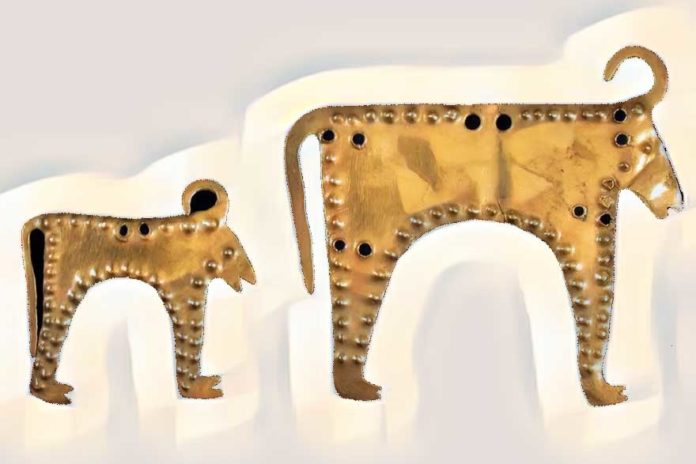The Varna Necropolis, located near the Black Sea coastal city of Varna in Bulgaria, is an archaeological site of immense significance. Discovered in 1972, the necropolis is known for its collection of artifacts, including the oldest processed gold found in the world, dating back to 4,600 – 4,200 BC during the Copper Age.
Archeological Findings
The Varna Necropolis comprises over 300 graves containing various objects, including gold jewelry, weapons, pottery, and other artifacts. The most striking discovery was the gold artifacts, considered the oldest processed gold globally, predating other known gold artifacts by nearly a millennium. This discovery has provided valuable insights into the cultural and technological advancements of the prehistoric society in the region.
Significance of the Gold
The presence of processed gold in the Varna Necropolis indicates the society’s high metallurgical expertise. The goldsmiths in the region had developed advanced techniques for processing gold, such as hammering, shaping, and ornamentation. The intricate designs and craftsmanship displayed in the gold artifacts demonstrate an impressive level of artistic skill and aesthetic sensibility.
The gold also provides insight into the community’s social hierarchy during the Copper Age. The distribution of gold objects within the graves suggests a clear social stratification. The individuals buried with larger quantities of gold and other valuable artifacts likely had higher social standing or held significant roles within the community.
Today, a permanent exhibition at the Varna Archeological Museum displays the Varna Necropolis discoveries.
Global Context
The discovery of the oldest processed gold in Varna, Bulgaria, has contributed to our understanding of the development of early human civilizations. The Varna Necropolis and its gold artifacts are evidence of the importance of metallurgy and craftsmanship in the evolution of human societies. The advanced techniques and artistic expressions exhibited in these artifacts have influenced the study of other ancient cultures globally.
The Terms Chalcolithic and Neolithic
The terms “Chalcolithic” and “Neolithic” both describe the same historical period, known as the Copper Age, which is considered a transition between the Neolithic (New Stone Age) and the Bronze Age. Although “Chalcolithic” translates to “Copper-stone,” it is not part of the Stone Age and is mainly used in Europe and West Asia. The Copper Age has never been separated as a stand-alone period but as a transition period between the Stone and Bronze Ages.
Final Words
The Varna Necropolis and its processed gold artifacts represent a crucial milestone in human history. The oldest known processed gold in the world sheds light on the Copper Age society’s technological and cultural advancements in the region. The discovery has provided valuable insights into early human civilizations and contributed to our understanding of the development of metallurgy and craftsmanship throughout history. As more research is conducted on the site, we can continue to expand our knowledge of the Varna Necropolis and its significance in the broader context of human history.



